Abstract
Three immunochemically and electrophoretically distinct lipoproteins, LP-A, LP-B, and LP-X,1 were isolated from the low density lipoprotein fraction (1.006-1.063 g/ml) in plasma from patients with biliary obstruction by a separation procedure which combines ultracentrifugation, heparin precipitation, and ethanol fractionation. This method, here described, permits the quantitative determination of individual plasma lipoprotein families on the basis of their protein moieties, rather than on the basis of their lipid moieties or density.
The chemical composition of the unique lipoprotein, LP-X, was similar to that of an abnormal lipoprotein, OLP, isolated by Russ et al. (29) and by Switzer (30). In obstructive jaundice plasma, the combined LP-X and LP-B accounted for 98% and the LP-A for only 2% of the total protein content of the LDL fraction.
This study indicates that the plasma lipoprotein pattern in obstructive jaundice is characterized by (a) a decreased concentration of HDL, (b) an increased concentration of LDL, and (c) the presence in the LDL fraction of varying amounts of a specific lipoprotein, LP-X, immunochemically and chemically distinct from LP-A and LP-B. LP-X, with its characteristically high content of unesterified cholesterol and phospholipids, is primarily responsible for the unusual protein and lipid content of the LDL fraction.
Screening tests in 61 patients with various forms of jaundice indicated that a characteristic immunoelectrophoretic precipitin are between plasma samples and purified antibodies to LP-X was observed only in patients with obstructive jaundice. This simple immunochemical test may represent a valuable new tool in the differential diagnosis of obstructive and nonobstructive jaundice.
Full text
PDF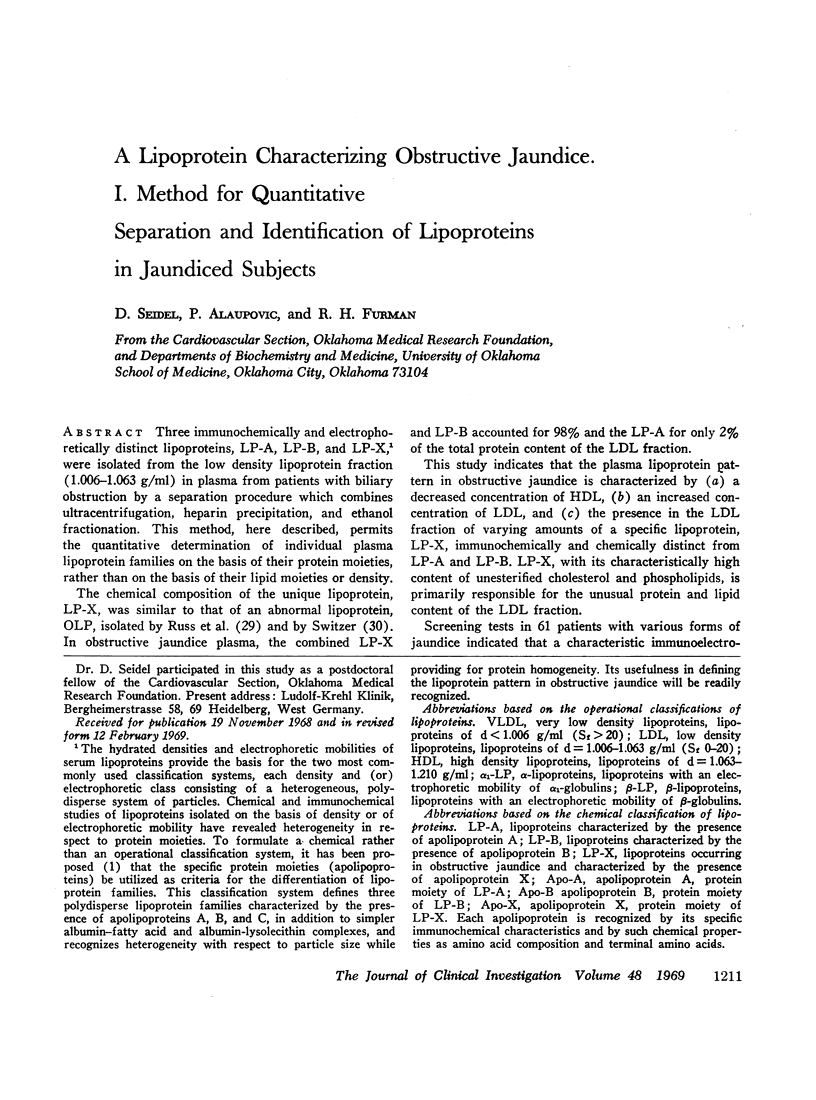
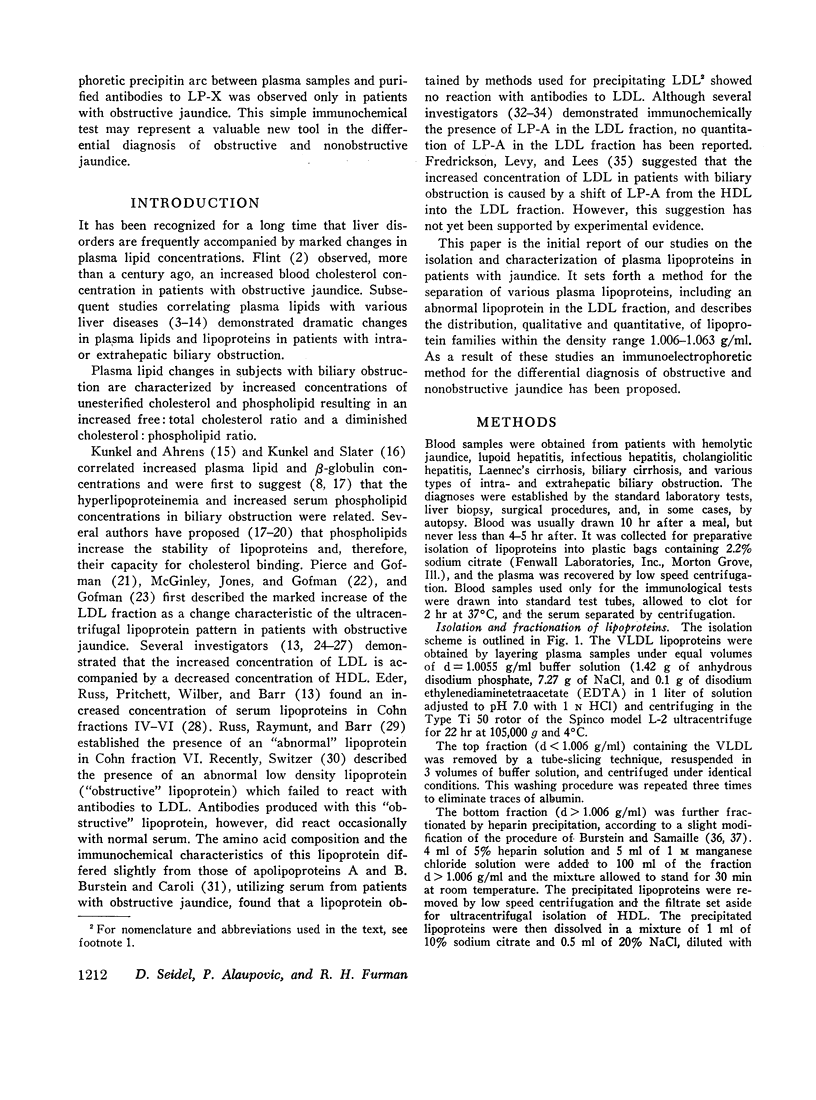
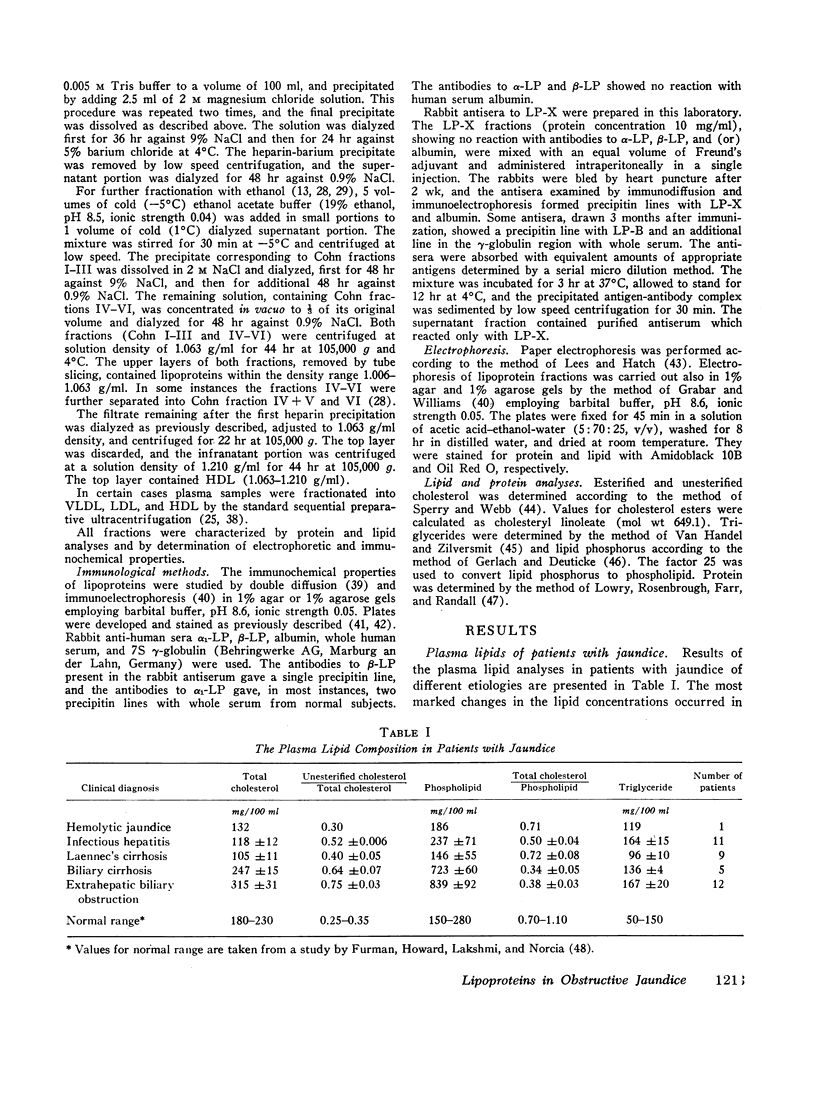

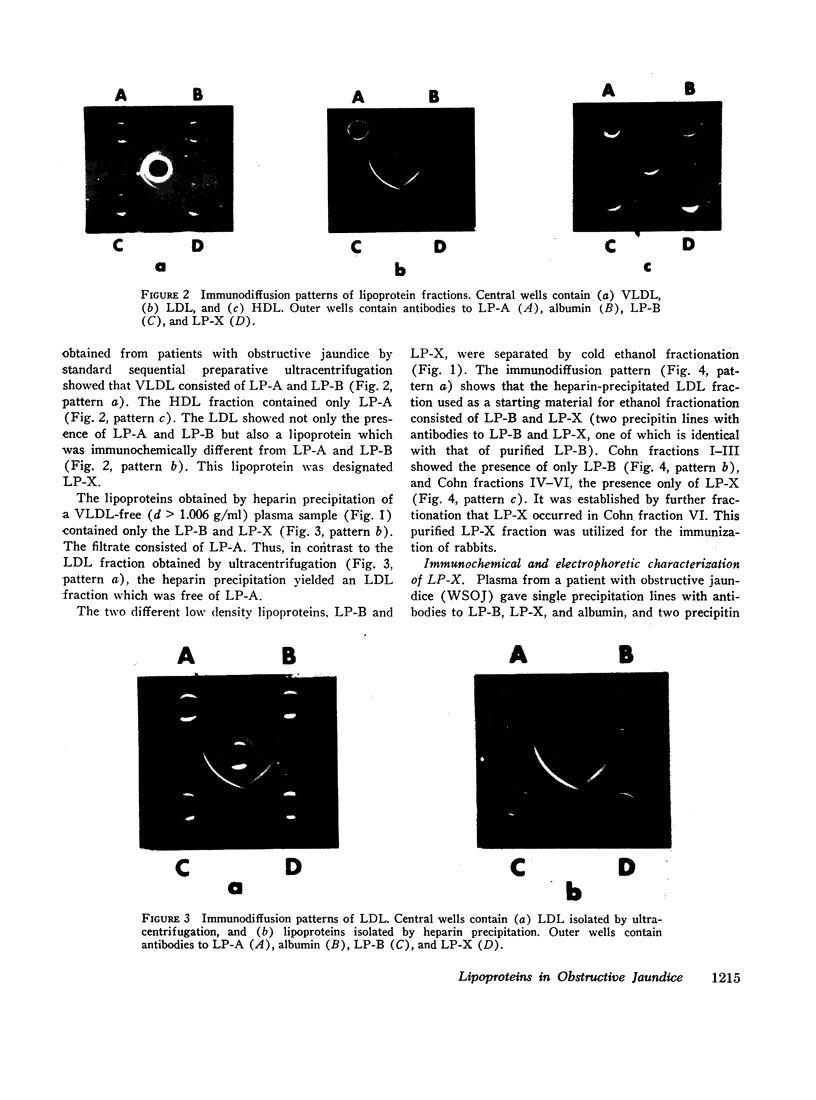
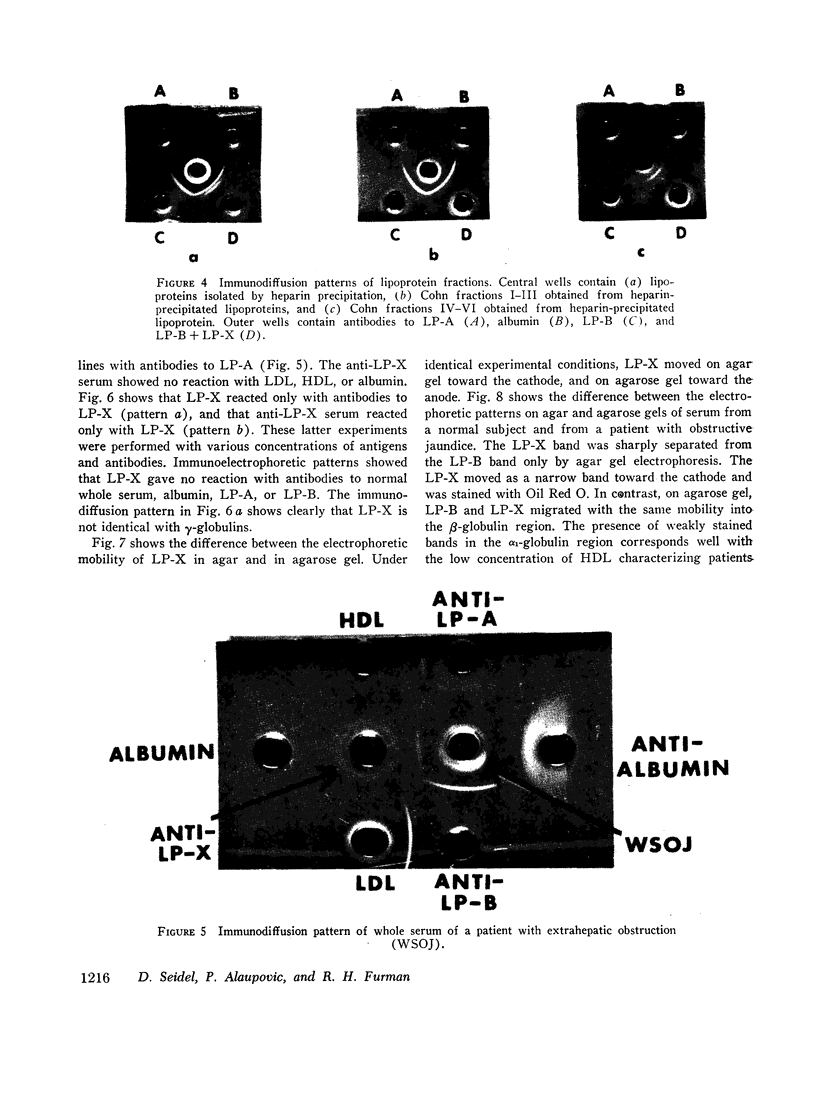
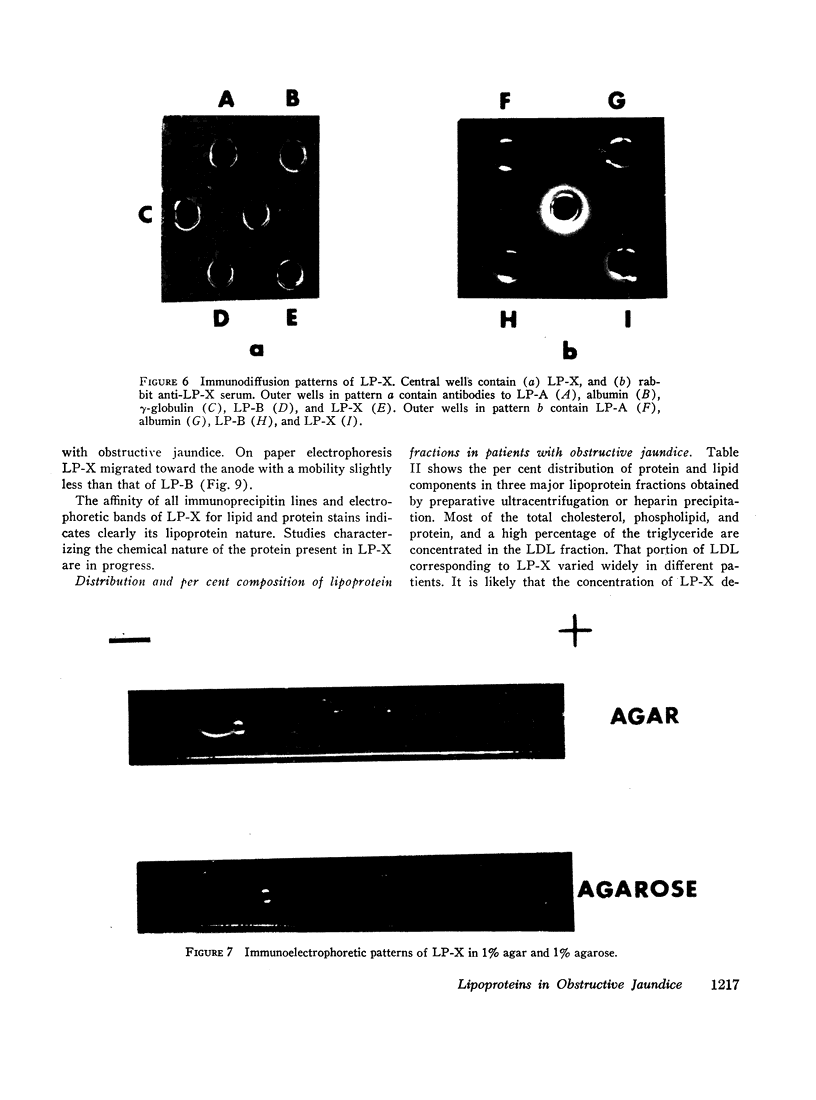
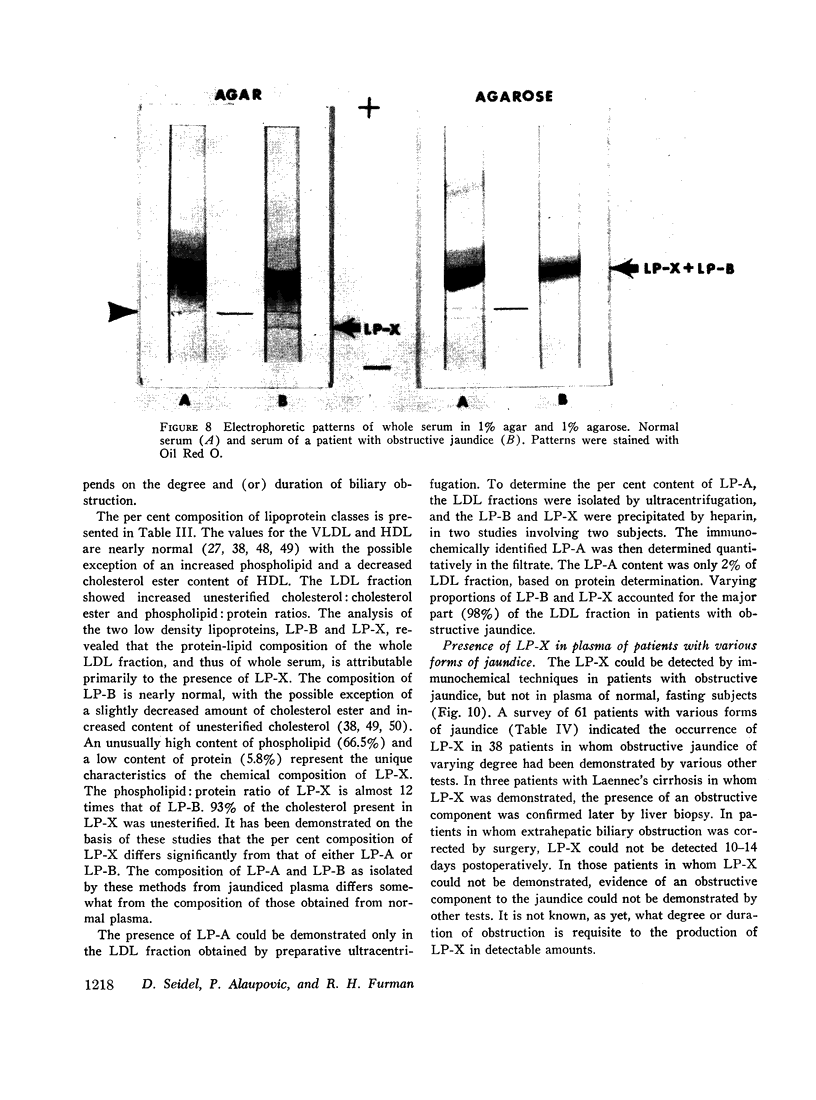
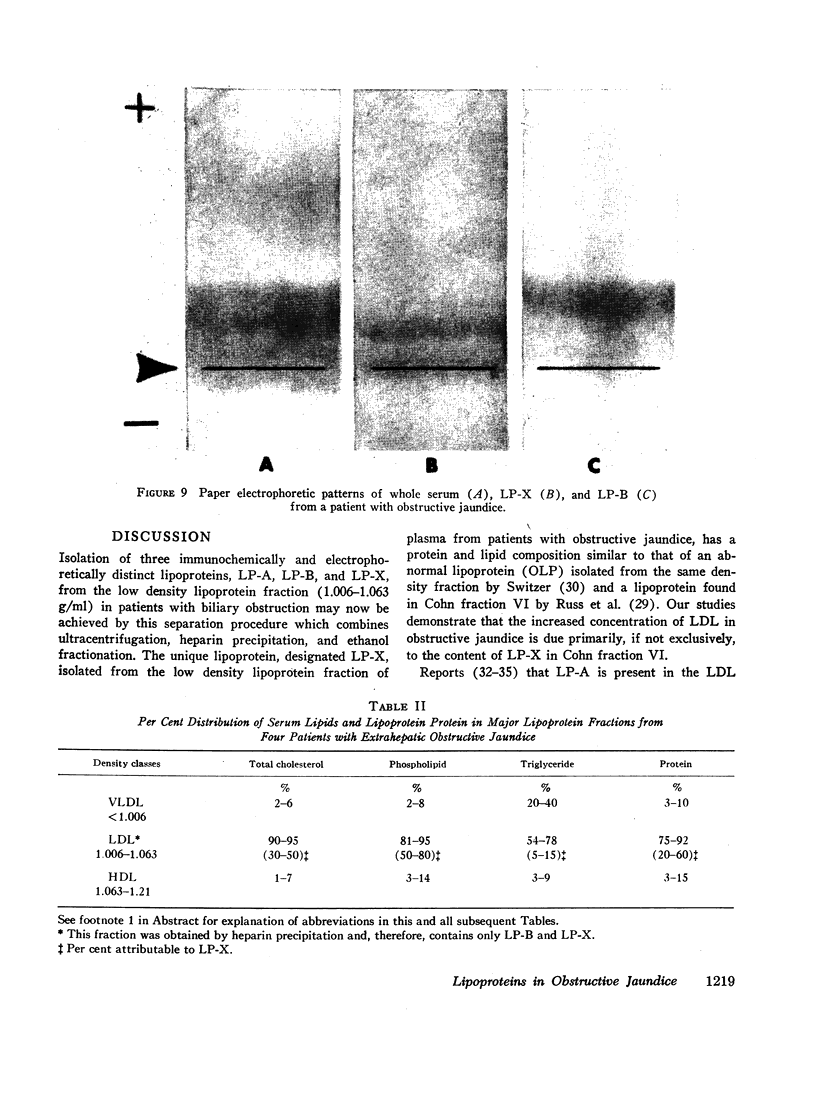
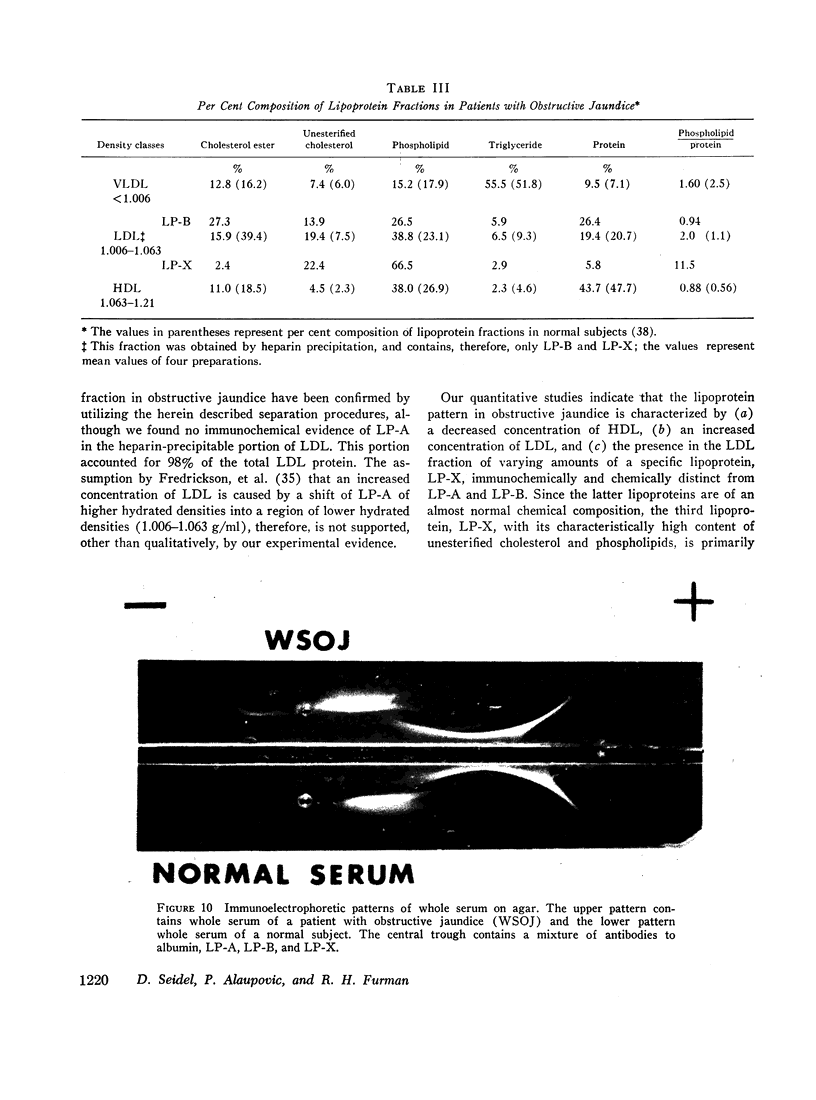
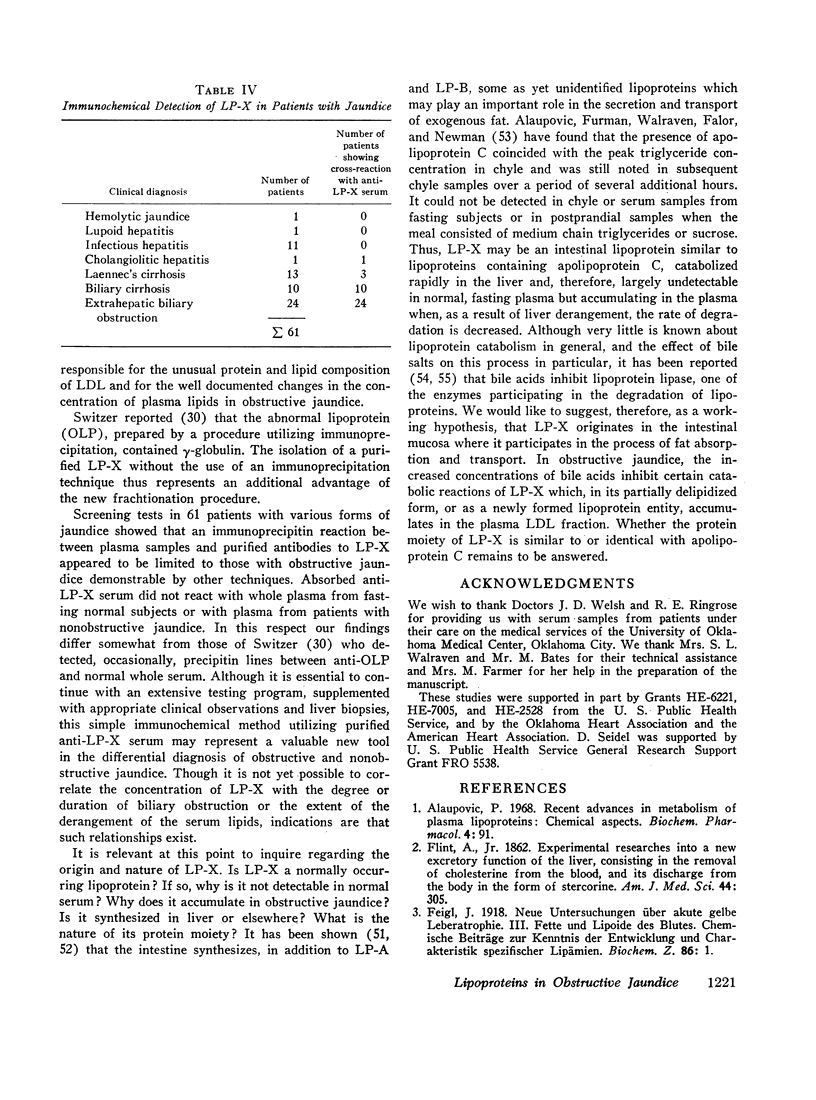
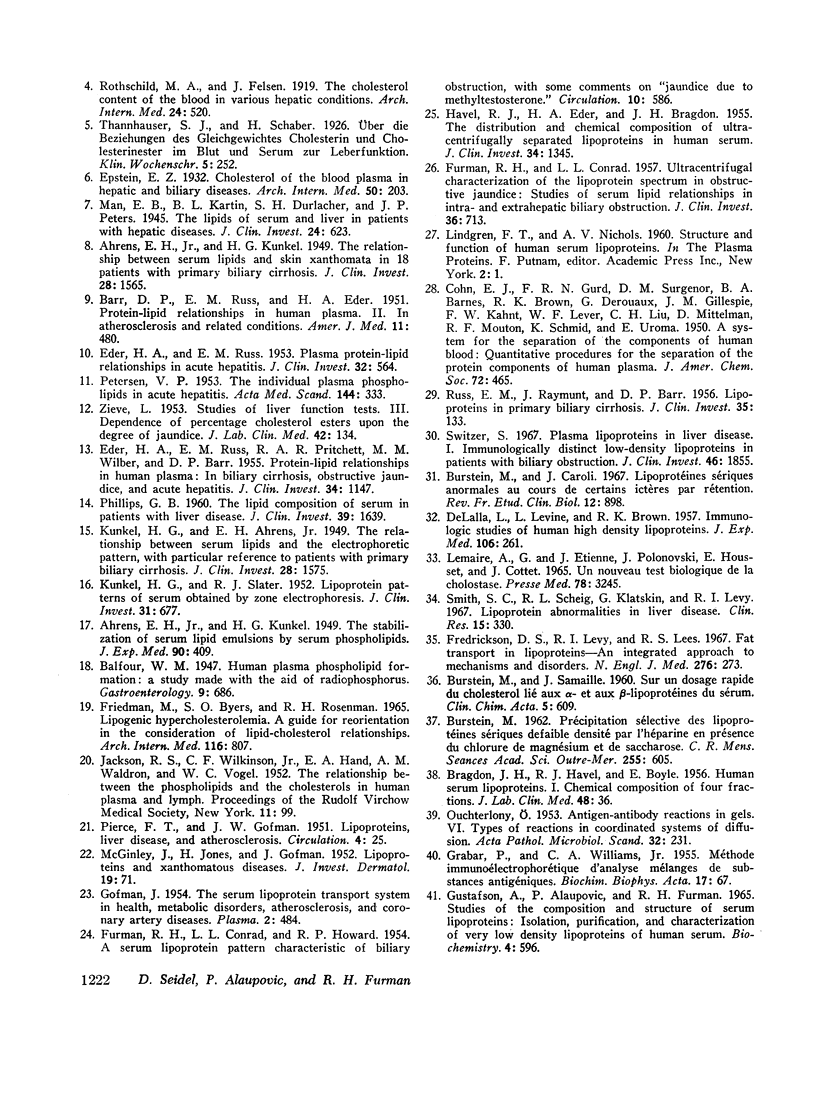
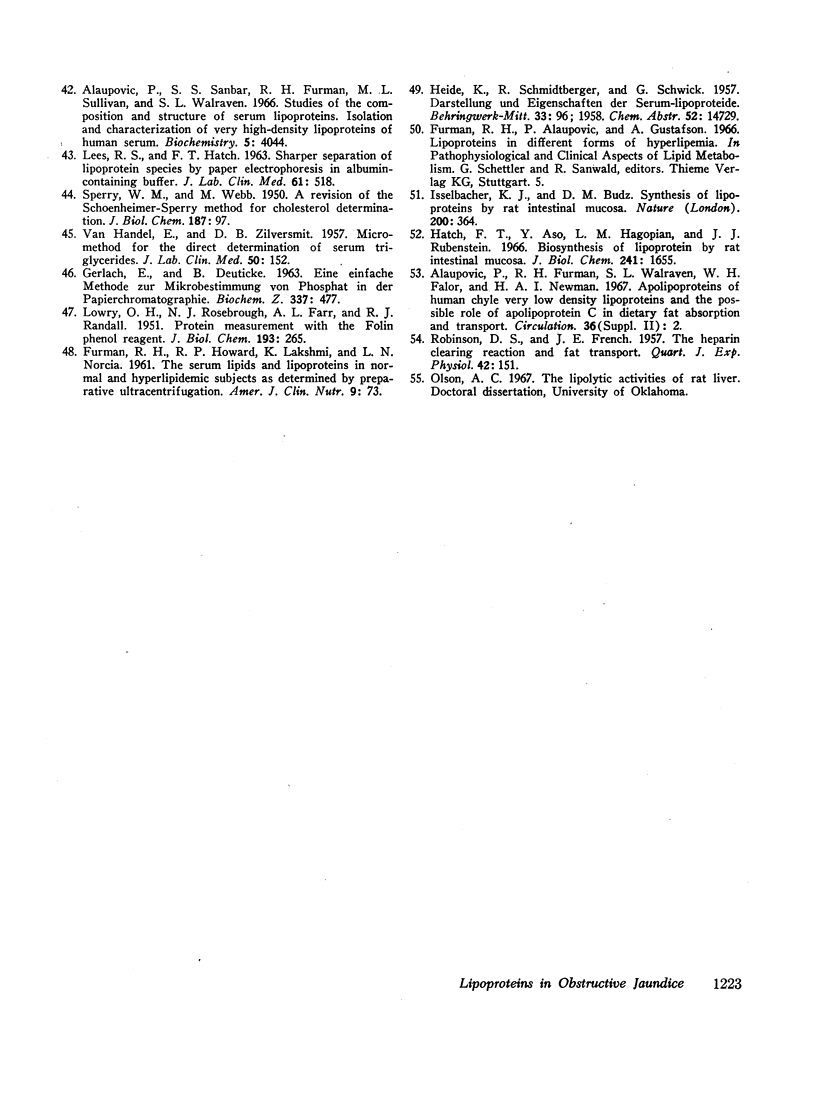
Images in this article
Selected References
These references are in PubMed. This may not be the complete list of references from this article.
- AHRENS E. H., Jr, KUNKEL H. G. The relationship between serum lipids and skin xanthomata in 18 patients with primary biliary cirrhosis. J Clin Invest. 1949 Nov;28(6 Pt 2):1565–1574. doi: 10.1172/JCI102222. [DOI] [PMC free article] [PubMed] [Google Scholar]
- BARR D. P., RUSS E. M., EDER H. A. Protein-lipid relationships in human plasma. II. In atherosclerosis and related conditions. Am J Med. 1951 Oct;11(4):480–493. doi: 10.1016/0002-9343(51)90183-0. [DOI] [PubMed] [Google Scholar]
- BRAGDON J. H., HAVEL R. J., BOYLE E. Human serum lipoproteins. I. Chemical composition of four fractions. J Lab Clin Med. 1956 Jul;48(1):36–42. [PubMed] [Google Scholar]
- BURSTEIN M., SAMAILLE J. [On a rapid determination of the cholesterol bound to the serum alpha- and beta-lipoproteins]. Clin Chim Acta. 1960 Jul;5:609–609. doi: 10.1016/0009-8981(60)90075-9. [DOI] [PubMed] [Google Scholar]
- BURSTEIN M. [Selective precipitation of serum lipoproteins of weak density by heparin in the presence of magnesium chloride and saccharose]. C R Hebd Seances Acad Sci. 1962 Jul 16;255:605–607. [PubMed] [Google Scholar]
- Burstein M., Caroli J. Lipoprotéines sériques anormales au cours de certains ictères par rétention. Rev Fr Etud Clin Biol. 1967 Nov;12(9):898–901. [PubMed] [Google Scholar]
- DELALLA L., LEVINE L., BROWN R. K. Immunologic studies of human high density lipoproteins. J Exp Med. 1957 Aug 1;106(2):261–271. doi: 10.1084/jem.106.2.261. [DOI] [PMC free article] [PubMed] [Google Scholar]
- EDER H. A., RUSS E. M., PRITCHETT R. A. R., WILBER M. M., BARR D. P. Protein-lipid relationships in human plasma: in biliary cirrhosis, obstructive jaundice, and acute hepatitis. J Clin Invest. 1955 Jul;34(7 Pt 1):1147–1162. doi: 10.1172/JCI103163. [DOI] [PMC free article] [PubMed] [Google Scholar]
- FURMAN R. H., CONRAD L. L. Ultracentrifugal characterization of the lipoprotein spectrum in obstructive jaundice: studies of serum lipid relationships in intra-and extrahepatic biliary obstruction. J Clin Invest. 1957 May;36(5):713–722. doi: 10.1172/JCI103474. [DOI] [PMC free article] [PubMed] [Google Scholar]
- FURMAN R. H., HOWARD R. P., LAKSHMI K., NORCIA L. N. The serum lipids and lipoproteins in normal and hyperlipidemic subjects as determined by preparative ultracentrifugation. Effects of dietary and therapeutic measures. Changes induced by in vitro exposure of serum to sonic forces. Am J Clin Nutr. 1961 Jan-Feb;9:73–102. doi: 10.1093/ajcn/9.1.73. [DOI] [PubMed] [Google Scholar]
- Fredrickson D. S., Levy R. I., Lees R. S. Fat transport in lipoproteins--an integrated approach to mechanisms and disorders. N Engl J Med. 1967 Feb 2;276(5):273–concl. doi: 10.1056/NEJM196702022760507. [DOI] [PubMed] [Google Scholar]
- Friedman M., Byers S. O., Rosenman R. H. Lipogenic hypercholesteremia. A guide for reorientation in the consideration of lipid-cholesterol relationships. Arch Intern Med. 1965 Dec;116(6):807–809. doi: 10.1001/archinte.116.6.807. [DOI] [PubMed] [Google Scholar]
- GERLACH E., DEUTICKE B. EINE EINFACHE METHODE ZUR MIKROBESTIMMUNG VON PHOSPHAT IN DER PAPIERCHROMATOGRAPHIE. Biochem Z. 1963 Jul 26;337:477–479. [PubMed] [Google Scholar]
- GRABAR P., WILLIAMS C. A., Jr Méthode immuno-électrophorétique d'analyse de mélanges de substances antigéniques. Biochim Biophys Acta. 1955 May;17(1):67–74. doi: 10.1016/0006-3002(55)90320-6. [DOI] [PubMed] [Google Scholar]
- GUSTAFSON A., ALAUPOVIC P., FURMAN R. H. STUDIES OF THE COMPOSITION AND STRUCTURE OF SERUM LIPOPROTEINS: ISOLATION, PURIFICATION, AND CHARACTERIZATION OF VERY LOW DENSITY LIPOPROTEINS OF HUMAN SERUM. Biochemistry. 1965 Mar;4:596–605. doi: 10.1021/bi00879a033. [DOI] [PubMed] [Google Scholar]
- HAVEL R. J., EDER H. A., BRAGDON J. H. The distribution and chemical composition of ultracentrifugally separated lipoproteins in human serum. J Clin Invest. 1955 Sep;34(9):1345–1353. doi: 10.1172/JCI103182. [DOI] [PMC free article] [PubMed] [Google Scholar]
- Hatch F. T., Aso Y., Hagopian L. M., Rubenstein J. J. Biosynthesis of lipoprotein by rat intestinal mucosa. J Biol Chem. 1966 Apr 25;241(8):1655–1665. [PubMed] [Google Scholar]
- KUNKEL H. G., AHRENS E. H., Jr The relationship between serum lipids and the electrophoretic pattern, with particular reference to patients with primary biliary cirrhosis. J Clin Invest. 1949 Nov;28(6 Pt 2):1575–1579. doi: 10.1172/JCI102223. [DOI] [PMC free article] [PubMed] [Google Scholar]
- KUNKEL H. G., SLATER R. J. Lipoprotein patterns of serum obtained by zone electrophoresis. J Clin Invest. 1952 Jul;31(7):677–684. doi: 10.1172/JCI102649. [DOI] [PMC free article] [PubMed] [Google Scholar]
- LEES R. S., HATCH F. T. Sharper separation of lipoprotein species by paper electrophoresis in albumin-containing buffer. J Lab Clin Med. 1963 Mar;61:518–528. [PubMed] [Google Scholar]
- LOWRY O. H., ROSEBROUGH N. J., FARR A. L., RANDALL R. J. Protein measurement with the Folin phenol reagent. J Biol Chem. 1951 Nov;193(1):265–275. [PubMed] [Google Scholar]
- Lemaire A., Etienne G., Etienne J., Polonovski J., Housset E., Cottet J. Un vouveau test biologique de la cholostase. Presse Med. 1965 Dec 25;73(56):3245–3247. [PubMed] [Google Scholar]
- Man E. B., Kartin B. L., Durlacher S. H., Peters J. P. THE LIPIDS OF SERUM AND LIVER IN PATIENTS WITH HEPATIC DISEASES. J Clin Invest. 1945 Sep;24(5):623–643. doi: 10.1172/JCI101644. [DOI] [PMC free article] [PubMed] [Google Scholar]
- McGINLEY J., JONES H., GOFMAN J. Lipoproteins and xanthomatous diseases. J Invest Dermatol. 1952 Jul;19(1):71–82. doi: 10.1038/jid.1952.66. [DOI] [PubMed] [Google Scholar]
- PETERSEN V. P. The individual plasma phospholipids in acute hepatitis. Acta Med Scand. 1953;144(5):333–344. doi: 10.1111/j.0954-6820.1953.tb15704.x. [DOI] [PubMed] [Google Scholar]
- PHILLIPS G. B. The lipid composition of serum in patients with liver disease. J Clin Invest. 1960 Nov;39:1639–1650. doi: 10.1172/JCI104187. [DOI] [PMC free article] [PubMed] [Google Scholar]
- PIERCE F. T., GOFMAN J. W. Lipoproteins, liver disease, and atherosclerosis. Circulation. 1951 Jul;4(1):25–28. doi: 10.1161/01.cir.4.1.25. [DOI] [PubMed] [Google Scholar]
- ROBINSON D. S., FRENCH J. E. The heparin clearing reaction and fat transport. Q J Exp Physiol Cogn Med Sci. 1957 Apr;42(2):151–163. doi: 10.1113/expphysiol.1957.sp001246. [DOI] [PubMed] [Google Scholar]
- RUSS E. M., RAYMUNT J., BARR D. P. Lipoproteins in primary biliary cirrhosis. J Clin Invest. 1956 Feb;35(2):133–144. doi: 10.1172/JCI103257. [DOI] [PMC free article] [PubMed] [Google Scholar]
- SPERRY W. M., WEBB M. A revision of the Schoenheimer-Sperry method for cholesterol determination. J Biol Chem. 1950 Nov;187(1):97–106. [PubMed] [Google Scholar]
- Switzer S. Plasma lipoproteins in liver disease. I. Immunologically distinct low-density lipoproteins in patients with biliary obstruction. J Clin Invest. 1967 Nov;46(11):1855–1866. doi: 10.1172/JCI105676. [DOI] [PMC free article] [PubMed] [Google Scholar]
- VAN HANDEL E., ZILVERSMIT D. B. Micromethod for the direct determination of serum triglycerides. J Lab Clin Med. 1957 Jul;50(1):152–157. [PubMed] [Google Scholar]
- ZIEVE L. Studies of liver function tests. III. Dependence of percentage cholesterol esters upon the degree of jaundice. J Lab Clin Med. 1953 Jul;42(1):134–139. [PubMed] [Google Scholar]











